You Need The Right Detailing Equipment
If you want your detailing business to be successful, having the right skills and a positive mindset isn’t going to be enough. To become a true professional, you need to invest in a range of detailing equipment and supplies.
Old rags, liquid soap, and a vacuum cleaner just won’t cut it.
Paying customers rightfully expect you to detail their vehicles to perfection. Having the right tools will make the job easier & quicker while providing superior results.
This means spending more money on equipment and supplies when you’re starting helps your business make more money in the long run.
The list of supplies and equipment needed for a car detailing business needs varies depending on a couple of factors. To figure out exactly what tools your business needs, consider the business type (mobile, hybrid, or stationary) and the services you provide.
Your mobile detailing equipment list will differ from that of a detail shop, and even from that of another mobile detailing business.
Whatever the case with your business, keep efficiency top of mind - invest in top detailing supplies and equipment that you can use in multiple day-to-day tasks.
To help you out, we’ve put together a list of must-haves for most professional detailing businesses. Having these necessities is a great starting point, but always keep an eye out for technological innovations and industry trends.
DETAILING EQUIPMENT
Pressure Washer
A trusted pressure washer is one of the must have car detailing tools for any detailing business.
This machine is a great help in the vehicle cleaning process. It allows you to easily remove dirt and dust from the surface, apply thick snow foam, and get into all the tough-to-reach spots.
A pressure washer will cut down how long and hard you need to work to clean a vehicle. This way, it saves you time, energy, and money!
You can choose between a portable or a remote-mounted unit. However, know that you will have to pull a portable pressure washer in and out each time you use it. With a remote-mounted unit, all it takes is flipping a switch and grabbing the spray gun.
We recommend the Adam's Pro-Series Pressure Washer.
This machine operates on a 120V power supply and produces 1800 PSI & over 2GPM. Plus, the ultra-quiet motor and pump allow you to work whenever and wherever without disturbing anyone.
Foam Cannon
This is one of the tools on this list you can go without. Yet, it's one of the most commonly used pieces of equipment in today’s detailing world. Plus, foam cannons are super fun to operate and can help you get stunning business photos for your website, ads, and social media!
A foam cannon is essentially a canister with a nozzle that plugs into your pressure washer. You fill it up with car soap and spray it on the vehicle to create a thick, snow-like foam. The foam lubricates the surface and makes it slick, allowing your wash mitt to glide over it without the risk of swirls and scratches. It also allows for a longer dwell time for the cleaning agent to loosen and eliminate any dirt build-on on the vehicle.
This means foam cannons are especially beneficial if the vehicle you’re working on has undergone paint correction recently or if it has soft, easy-to-damage paint. Also, if you’re detailing motorcycles, a foam cannon will prove both time- & labor-saving.
To get the most bang for your buck, we suggest the MJJC 2.0V Snow Foam Lance Cannon Kit.
Paired with a pressure washer that produces at least 1300 PSI & Undrdog Soap, you’ll have foam for days!
Water Deionizer
Over 85% of US citizens have moderately to extremely hard tap water. Unless you’re lucky enough to live somewhere with soft tap water, you should consider getting a water deionized.
To see in which zone of water hardness you live, check out this map.
A water deionizer filters water to eliminate any impurities and minerals. This way it prevents water spots while simultaneously reducing the likelihood of swirls and scratches. Plus, it saves time and energy because water deprived of minerals acts as a magnet for contaminants like dirt, dust, grime, bird droppings, etc.
We suggest you utilize the On The Go Spotless Portable Dual Bed Deionizer at least when rinsing, cleaning upholstery, or delicate plastics.

With its dual tank design, this unit will reduce your operating cost compared to mixed bed deionizers.
Dry Vapor Steamer
If you’re offering interior detailing services to your customers, having a pro-grade steam cleaner will benefit you greatly. A steamer is one of the most expensive pieces of equipment on this list, but trust us - it’s well worth the investment.
A dry vapor steamer doesn’t use water like a wet steamer, but hot air, which allows you to clean without leaving any stains and residue behind. The combination of heat and steam makes sanitizing and freshening up vehicles’ interiors a much easier task.
This machine is the most effective tool for cleaning carpets and upholstery. It’s great for odor, stain, and gum removal, as well as disinfecting headliners, dashboards, and cup holders.
We recommend the Wagner Spraytech 0282014 915e.
On a full tank, it provides 40 continuous minutes of cleaning power. Plus, it comes with 18 accessories & nozzles.
Air Compressor
An air compressor probably isn’t the first thing that comes to mind when you think of detailing equipment. Nonetheless, it can save you a ton of time, especially when working on interiors.
There are many hard-to-reach areas in the cabin - the nooks and crannies between seats, cupholders, and dashboards, that collect dust and debris. If you own an air compressor, you can simply blow all of that out.
More great uses for an air compressor when detailing are blowing water off a wet car and drying areas that are difficult to dry off completely (distributor, side mirrors, grills, bumpers, hood vents, etc.). This machine can also be used to power your paint gun or wet/dry vacuum.
We suggest the Stealth 20 Gallon Ultra Quiet Air Compressor for its powerful induction motor, 20-gallon capacity, and compatibility with many different tools.

If you’re just starting out and don’t want to invest in an air compressor straight away, choose a wet/dry vacuum cleaner that has a blow function - it won’t be as efficient but will still save you some time!
Wet-Dry Vacuum
This one is a staple for any professional detailing business. You just can’t do without a commercial-grade wet/dry vacuum cleaner.
The appliance you choose must be powerful because you will need strong suction to remove all the debris and contaminants from vehicles’ interiors, exteriors, and engine bays. You also want to choose a vacuum cleaner that comes with a selection of different attachments and settings for blowing, drying, and sucking liquids.
We recommend the Prolux Blue Wall Mount.

It’s powerful, convenient, and durable. It comes with a set of 16 tools and attachments and a 3-year warranty!
Hot Water Extractor / Carpet Extractor
If you often find yourself struggling with removing stubborn stains from carpets, upholstery, leather, or vinyl - a hot water extractor is just what you need.
This powerful machine can also be used to remove tar and tree sap from vehicles’ surfaces, as well as to take off wax from paint and windows.
An extractor lifts and eliminates stubborn dirt particles by simultaneously applying water and suction. The particles are dissolved in a stream of hot liquid and sucked up by the wand into a holding tank.
If the interior you’re working on requires only surface-level cleaning or you’re in a rush, a dry vapor steamer combined with a wet-dry vacuum will do the job. But for heavy-duty cleaning tasks, a hot water extractor will be necessary to eliminate pesky buildup. The same goes for tough stains because steam sets them in permanently instead of removing them.
Also, if the materials you’re working with are delicate, a hot water extractor is your best bet. The process of extraction prevents fibers from shrinking, which is why the majority of carpet and upholstery manufacturers recommend it.
We like the Sandia 50-1001 Spot-Xtract Commercial Extractor.

With a 3-gallon capacity, it’s a smaller unit constructed of lightweight material. This makes it fully portable and a great option for new businesses.
Plastic Razor Blades
Detailers often have to take off decals, stickers, vinyl lettering, and window tint from customers’ vehicles. Using typical razor blades for these tasks isn’t a good idea.
Traditional razor blades have a sharp, metallic edge that can cause scratches on delicate surfaces. That’s why every detailer should own a set of plastic razor blades.
These blades are made pliable so they won't damage the surfaces being scraped. This feature makes them great for removing paint overspray, tar, and other materials that are stuck to vehicles’ surfaces.
We recommend the FOSHIO Plastic Razor Blade Scraper.

You get 2 scarpers and 100pcs of double-edge plastic blades for just over $10.
Rotary & Orbital Buffers/Polishers
To achieve that showroom shine on customers’ vehicles, your detailing business needs both rotary and random orbital (a.k.a. dual action) buffers/polishers.
Both of these machines utilize a polishing pad on the end of a rotating shaft to remove swirls, scratches, oxidation, and other blemishes from paint. The difference is in how the pad is spun - a rotary buffer moves around in circles, and an orbital buffer moves side-to-side, mimicking hand-polishing. When you should choose one or the other kind of buffer depends on the task at hand.
When on a low setting, orbital polishers are great for the quick application of waxes and sealants. These machines are safer for beginners as they are less aggressive and cover their own scratches due to the random motion of the pad. However, this means they’re not aggressive enough to eliminate any but the finest of scratches.
In this category, we recommend the Maxshine M15 Pro Series II DA Dual Action Polisher and the Detail King Rupes LHR 15 Mark III Big Foot.


Both of these products are great for beginners due to their advanced ergonomic design and balance.
Rotary buffers are direct drive machines that can take off paint. This is great when you’re dealing with more severe damage that requires you to take off enough paint surrounding the scratches to make the surface level. Used with a cutting compound, a rotary buffer can also remove sanding marks after paint reapplication. But these machines leave fine scratches of their own, which makes them unsuitable for finishing operations.
Using a rotary buffer requires both skill and experience because there is always the risk of burning through the paint. That’s why these machines are recommended for professional users only.
RUPES LH19E is one of the most capable and maneuverable rotary polishers on the market.

We recommend it for its design, efficiency, and ease of use.
For both rotary and orbital polishers, you’ll need a selection of polishing pads for different tasks, which we’ll touch on below. You can buy these separately or get them in a kit with your polisher.
Rolling work seat
Unless you want to deal with terrible back and knee pain in the future, you should get a rolling work seat asap.
This small investment will bring a little comfort into your day-to-day tasks, like the polishing of lower panels, paint correction, as well as thorough detailing sessions of wheels, tires, exhaust tips, and more!
We suggest the Powerbuilt Roller Seat.

With a 300-pound capacity, it’s heavy-duty & comfortable for anyone. Plus, it has a full-length pull-out drawer and two removable trays perfect for storing your detailing supplies while you work.
Power Souce
If you’re running a mobile detailing business, a generator is something you will want to invest in at some point. It’s a must for pumping water, powering polishers, operating vacuums, pressure washers, etc.
The thing is, generators don’t come cheap. For weekend warriors, it’s probably more cost-effective to get high-quality extension cords & hoses. This way you can ask your customers to access water and power from their homes.
When you decide you do want to get a generator, the first step is to take inventory of the equipment you want to power. This will help you pick the type of generator that best suits your needs.
There are two main options on the market today: inverter generators & conventional multipurpose generators. Inverter generators are great if you need portability.
We suggest the GENMAX ultra quiet portable 4000W generator.

If you have enough room in your trailer, a standard 3500W generator is also a solid choice.
Hoses and Cords
Reliable hoses and cords are vital to any detailing business.
There is a wide variety of hoses and different hose attachments on the market today. Two general categories are commercial and consumer-grade (garden) hoses.
Garden hoses are usually made of vinyl which makes them flexible, but also prone to kinking and leaking. For detailers, a commercial hose is a safer bet. It can be used with a pressure washer because it’s stronger, less prone to leaks, and more resistant to wear and tear.
Still, we recommend the Giraffe Tools Retractable Garden Hose as it’s a hybrid hose that is weather flexible and abrasion-resistant.

It passed the 200PSI pressure test and the 600PSI bursting pressure test.
Tip: When you’re buying a professional-grade hose, always make sure to get the right connectors.
Electricity isn’t something you want to mess with.
When purchasing cords for your detailing business, consider how many amps your tools will draw. If your tool load is up to 10amps, any 16 gauge corf between 0-100 feet long will do the job. If it’s between 10 and 15 amps, to safely power your equipment, you can choose between a 0-50ft. long 14 gauge cord, or a 50-100ft. 12 gauge cord.
We like the Clear Power 50 ft TPE Rubber for its oil, water, fire, weather, kink and abrasion resistance.


To keep all of your cords nicely organized and prevent damage, we suggest getting the ReelWorks Extension Cord Reel and cord clips like Cable Cuff PRO.



Light Source
In the sun, every swirl, hologram, or scratch on car paint becomes visible. But once you get the car inside, without the right light source, these blemishes become poorly or completely invisible. Interior detailing also requires a proper lighting setup. Without it, it’s very difficult to work effectively.
There are many options when it comes to light sources for detailers: overhead garage lights, color-matching lights, work lights and spotlights, headlamps, portable and handheld lighting options. Different detailing tasks require different types of lighting, so it’s best to employ a combination of some or all of these types.
Bright overhead lighting is necessary to provide consistent illumination on all work surfaces. That way you can use your tools from any angle without casting shadows. LEDs (5000-6000k) are the way to go for mimicking daylight while staying pretty cool and energy-efficient.
Our recommendations are the NC Bright DIY Plug-in Hexagonal Garage Lights or the Barrina LED Shop Light 4FT.


If you perform paint correction often, you should consider investing in professional color-matching lights. They fall into the category of defect-finding lights as they are designed to expose imperfections in any paint color that basic overhead lighting can’t. We suggest the SCANGRIP MULTIMATCH 3 LED Color Match Light for its unique daylight function, the option to choose between 5 different color temperatures and 5 different levels of brightness, depending on the job at hand.

If color-matching lights are too expensive for you at the moment, consider getting a couple of LED work lights on a tripod to help focus on different panels.
Spotlights on a stand are also a great option since they provide a focused beam of light that helps evaluate paint for imperfections.
A work light can be mounted on top of the car or used handheld to see clearly when working in dark places like under dashboards or behind seats. For detailing interiors and engine bays, it’s good to have portable lights you can hang off-hook to different surfaces.

For exteriors, handheld LED penlights can aid in finding swirls you may have missed. Working hands-free with a LED headlamp is beneficial for both exterior and interior detailing.

Water Reclamation System
Water reclamation systems are used to reduce water usage by recycling.
Owners of detailing and car wash businesses must make sure they’re following EPA regulations for water treatment & waste management. Different states & cities have different restrictions when it comes to water runoff so, to avoid fines, it’s best to get familiar with laws that apply where you live.
Many products used in the industry contain harsh chemicals that can enter storm drains and lead to pollution. For this reason, many companies are now coming up with eco-friendly solutions. But even if you use traditional products, investing in a water reclamation system is the way to go - it can help your company’s bottom line. Since water and sewer bills continue to skyrocket, water reclamation can save you anywhere from 8-20k per year. Plus, it can be a selling point if you’re marketing your services as environmentally friendly.
Water Containment Mats are the most popular way to capture chemicals, water, grease, dirt & grime for responsible disposal. They come in different sizes and usually have inflatable cylindrical tubing along the edges that helps contain the liquid. Our recommendation is the TruContain Containment Mat.

You also need a water reclamation unit that sucks up and filters dirty water before it is returned to a holding tank to be reused or disposed of. As the last line of defense, you can utilize a cover that filters water before it enters storm drains.
Buckets
Buckets are a must-have for any detailing shop. They're used for washing and rinsing vehicles during initial prep, mixing chemicals, storing water, and cleaning supplies.
When purchasing buckets for your detailing business, consider the design and capacity. In terms of design, look for removable grit guards, tray attachments, and lids. As for capacity, we suggest going with a 3-pack of 5-gallon buckets like the Hudson Exchange Premium 5 Gallon Bucket.

Most detailers employ the ‘Two Bucket Method’ for vehicle washing. One bucket is used for water with a cleaning product and the other one for clean, rinsing water. This way, the likelihood of inflicting swirl marks and marring on the paintwork during the wash process is minimized.
However, you do need a third bucket! Wheels have the highest concentration of contaminants on a vehicle. That’s why the water and wash media used to clean them should be kept entirely separate in a dedicated, third bucket.
Sponges
Good quality sponges are a no-brainer, both foam, and microfiber varieties. Foam is best for applying waxes, sealants, and coatings, while microfiber works better with cleaners and degreasers.
Still, do keep in mind that sponges are the oldest tools used to wash vehicles, and are not always the best choice. Sponges don’t hold suds well and can trap dirt & debris between their flat surface and the clear coat. This can lead to small scratches that cause swirl marks later on.
There is still a use for sponges in detailing! Put them to work when cleaning wheels. A sponge wheel brush conforms to the shape of the cracks and crevices and will help you maneuver in tight spaces where brushes have a hard time.
Brushes
There is a variety of different types and grades of brushes your detailing business needs - for cleaning, polishing, and applying finishing products.
Cleaning brushes have soft bristles that won’t scratch delicate surfaces like glass and chrome. Polishing brushes have somewhat harder bristles because they are used to remove dirt from wheels and tires. Brushes used for wax, sealant, or coating application are designed to not leave streaks behind when dried off with towels.
We advise you to be careful when picking out brushes for body panels and rims. Low-quality ones can cause damage to the delicate paint and clear coat of modern vehicles. Nevertheless, especially for detailing larger vehicles, it’s beneficial to have a brush with a handle for reaching the roof and other tough-to-reach areas.
When it comes to interior detailing, it’s good to get a set of brushes specifically created for dashboards, seats, mats, carpets, air vents, and the step panel.
Some types of brushes you should consider include:
- Woolie brushes - great for getting deep inside tight spaces to eliminate dirt
- Small detailing brushes - for steering wheels, car emblems, and seat pleats
- Rubber pet hair removal brush - for getting rid of pet hair from interiors
- Carpet and upholstery brushes - for seats, carpets, headliners, and vinyl
- Drill brushes - for tire treads, mats, carpets, vinyl, and leather surfaces
- Microfiber car wash brushes - for preventing damage to exteriors
- Grill and body brushes - for exterior surfaces and cleaning grills
- Wheel and tire brushes - for efficient wheel and tire cleaning


If you are just starting out, choose quality over quantity. We suggest getting this Detailing Brush Set. The 3 brushes are metal free and made out of densely packed boars hair bristles for gentle cleaning.

Applicators
If you provide leather conditioning, wax, sealant, or coating application services to your customers, you are going to need the right applicators for each job.
Even the industry's best products won’t perform to their maximum capacity when applied with the wrong applicator. Plus, poor-quality pads can severely damage paintwork!
Steer clear of the cheap knock-offs some online sites sell.
There are a couple of options for applicators on the market today: those made out of cotton cloth, terry cloth, chamois leather, and microfiber. Microfiber applicators work best because they’re soft but sturdy enough to spread products evenly across the surface without much buffing.
Undrdog Pads have inside sewn edges that ensure that only premium microfiber fabric comes into contact with any surface - this makes all the difference, believe us! They have a medium-firm sponge core that gently conforms to contoured surfaces and fits right in the palm of your hand as you apply.

Wash Mitts
Different types and grades of wash mitts are another necessity for every detailer.
Wash mitts have the ability to absorb grit particles because they’re not flat-faced like sponges, which reduces the chance of paint scratches. They’re used to clean both exteriors & interiors, but shouldn’t be used on windows or other glass surfaces.
Most wash mitts are that made with elastic cuffs to fit any hand perfectly and are very easy to clean. However, not all wash mitts are created equal. Getting low-quality ones will ultimately cost you more in the long run.
In terms of materials, you can choose between wool/sheepskin, synthetic wool, and chenille microfiber wash mitts. Wool is always a safe bet, but these mitts are more expensive than other kinds and don’t last as long. We suggest going with super soft microfiber mitts like the TAKAVU New Car Wash Mitt.

Polishing pads
Polishing pads are used for machine and hand polishing, as well as glazing and spot defect removal. They work through friction and are designed to hold the abrasives in polishes & compounds, which makes them work similarly to extremely fine sandpaper.
Depending on the type of paint and level of damage, you can get different effects by using the same polishing product with a different pad. There are a couple of basic categories of polishing pads in the detailing world: wool, foam, and microfiber.
Foam pads are most versatile - they’re used for everything from cutting to refining and finishing. Wool and microfiber pads, on the other hand, are more aggressive and quickly cut away more of the clear coat and paint. That’s why they’re mostly used when performing an in-depth multi-stage paint correction.
Wool pads are designed primarily for rotary polishers and cut through the heaviest paint defects. However, they leave behind a surface full of abrasions and holograms.
Microfiber pads like the Meguiar's DMC5 DA 5" Microfiber Cutting Disc are somewhat less aggressive and can be used with DA polishers.


Still, they leave behind micro scratches and a cloudy surface that needs refinement afterward.
Foam pads are the top choice for many detailers because they can take you through the entire process from beginning to end. The aggressiveness of these pads is dictated by their construction, which depends on the part of the paint correction process they’re designed to carry out. Based on that, foam pads fall into 3 main categories: compound, polish, and finish. The Detail King Rupes Yellow Polishing Foam Pad is our recommendation for eliminating light swirl marks, holograms & marring.
It leaves a smooth, glossy sheen and works great for temperature-sensitive paints.
Tip: When purchasing polishing pads, consider their material and cut, surface paint, and surface size, as well as compatibility with your polisher/buffer machine.
Microfiber Towels
Microfiber towels are super popular in the detailing industry due to their versatility. These cloths can be used on all surfaces, including glass, leather, vinyl, plastics, and paint. They’re great for washing, drying, wiping, polishing, and buffing!
Microfiber towels can be hand or machine washed at a cool temperature (under 30 degrees) and reused. Investing in high-quality ones and caring for them will save you time and money in the long run as poor-quality towels break down after just a few washes.
Tip: When washing your microfiber cloths, stay away from powdered detergents and fabric softeners as these products leave residue on microfiber fabric.
The only times in which you shouldn’t wash and reuse your microfiber towels is when they have been used with tar & glue removers, to buff off coating residue, and those that are extremely dirty. It’s nearly impossible to rinse out the coating residue and small particles of grit and dirt from microfiber, so it’s far better to throw these away and prevent inflicting damage on your next detail.
It’s best if you can have 3 separate containers for your microfiber towels. The first one for new cloths (for the most sensitive surfaces); the second one for those that are a bit worn, but still in good condition (for glass, leather, cleaning, etc.); and the third for those that are noticeably worn down (for dirty jobs like engine bays & exhaust tips).
Undrdog’s detailing towels for polishing, buffing, and touch-ups are made up of Korean plush microfibers. These fibers are hand split, meaning each strand is cut in half to create extra thick and soft fibers. Having high-quality microfiber cloths like these in your detailing arsenal will help you get that showroom finish every time!
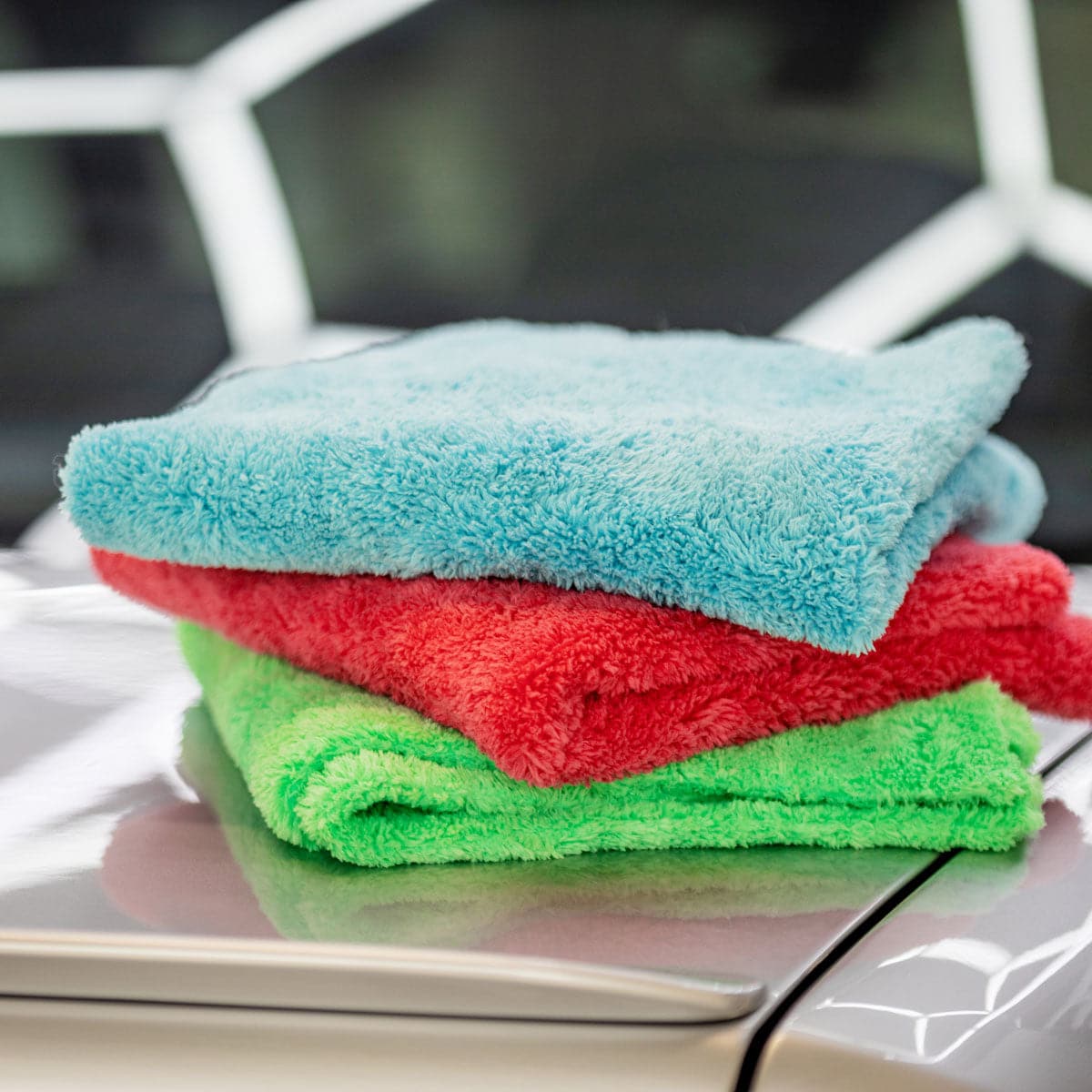
DETAILING SUPPLIES
APC
An all-purpose cleaner is every detailer’s go-to product to lift away dirt, grime, tar, cut grease, remove stains and adhesives from different interior and exterior surfaces. You can use APC on fabric, upholstery, carpets, mats, windows, plastics, vinyl, leather, rubber, paint, and more.
The options include getting a dedicated Industrial Cleaner & Degreaser or denatured alcohol like Klean-Strip GSL26.

The latter option is cheaper and just as effective. Just make sure you wear protective gear and read the dilution instructions first. To be extra cautious, always test the solution in an inconspicuous place first.
Car Soap
You should never use regular household cleaning products to wash a car.
Why? Dish soap contains degreasers that can damage the vehicle’s surface and cause premature paint fading over time.
On the other hand, car soaps have been created specifically to clean and protect automotive paint. Most of them are mildly alkaline (ph 7.1-8) which helps in breaking down dirt, dust, and tar. But if the product is too alkaline or too acidic, it can easily damage finishing products, rubber seals, plastic, and metal trims.
To reduce the risk of damaging paint and other vehicle components, we recommend using a ph-balanced car soap. Other characteristics you want to look for are heavy foaming, good lubricity, and biodegradability. Avoid “waterless” and “2-in-1 wash & wax” products - don’t fall for the marketing gimmicks.
Undrdog Soap is a professional-grade soap for cleaning cars, boats, and other hard surfaces. It eases wax and grease removal and improves the longevity of protective coatings - all that while providing a smooth feel. This product contains no ammonia or caustic chemicals that could damage the surface of your ride or the environment.

Clay Bar
Detailing clay is a staple in the industry. It’s an engineered resin compound that removes contaminants from paint, glass metal, and more without damaging the surface.
A clay bar is great for removing tree sap, brake dust, mineral deposits, tar, cement, bug splatter, and other types of debris. It can help prevent swirl marks and scratches when applying finishing products because it leaves a smooth paint finish. Yet, claying cannot eliminate swirl marks and scratches if they’re already there.
We suggest the IPELY 4 Pack 100g Car Clay for affordability and convenience.

Just know that you should always use detailing clay with a clay lubricant. This will prevent loose debris from scratching the surface you’re claying.
Glass Cleaner
Professional detailers have dedicated automotive glass cleaners to clean windows and windshields. Car soap won’t damage them, but can leave streaks and smears - and nobody wants that!
Detailing glass cleaners are more potent than their household counterparts. These products are designed to remove bug splatter, bird droppings, tar, and exhaust film.
There are many auto glass cleaners available on the market, and not all of them are good quality. When choosing a glass cleaner for your detailing business, there are a couple of things you should avoid:
- products that contain wax or similar compounds - they leave a residue that can create haze or streaks
- products that contain ammonia and dyes - many people have tinted windows which these cleaners could harm
Undrdog Window Warsh will get you exquisite results without the elbow grease! It’s completely safe to use out of the shade, and suitable for most hard surfaces as it's wax, ammonia, and dye free.
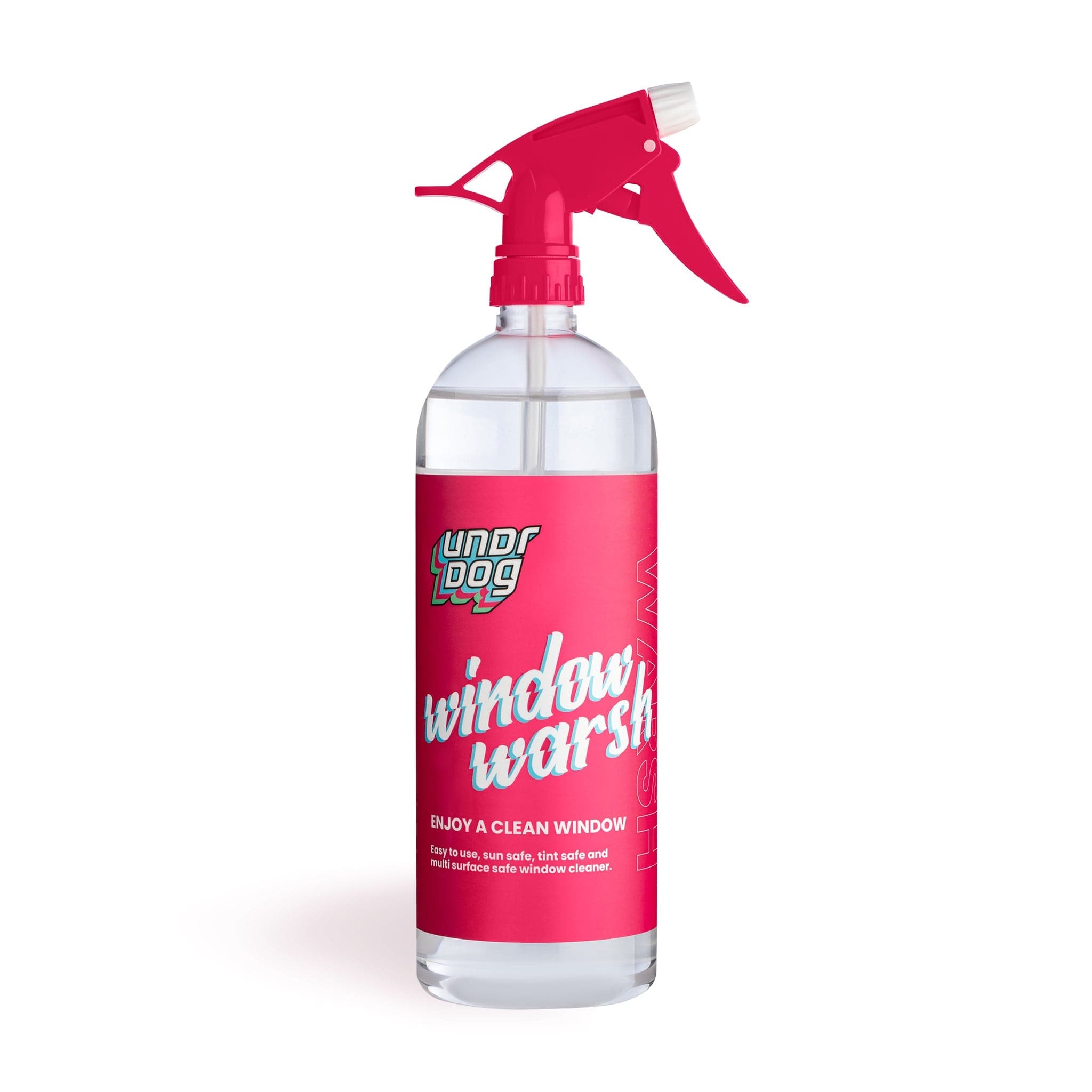
Water Spot Remover
Most car owners struggle with water spots. These stubborn mineral deposits and stains occur when “hard” water dries on the vehicle’s surface.
Apart from ruining the appearance of cars, water spots can bond and even etch to the paint’s surface if not promptly removed with a water spot remover. Plus, you have to get rid of them before applying finishing products.
A water spot remover is a mildly acidic chemical formulated to remove water spots from paint, metal, glass, and more.
Undrdog WSP easily eliminates water and mineral spots, rust and oxidation stains, calcium deposits, and limescale from vehicles with all types of finishes.

One bottle can cover the entire exterior of a mid-size car in one application, which provides excellent value for money.
Adhesive Remover
Adhesive removers always come in handy when detailing. Think about all the times you have to remove the residue of stickers, adhesives, decals, vinyl lettering, and tints from customers’ vehicles.
After scraping the adhesive off with a plastic razor blade, you will need a product like Rapid Remover to remove the glue. A couple of sprays should be enough to eliminate the filmy residue.
Wax and Grease Remover
Whenever you’re preparing a vehicle for polishing or protective coating installation, you’ll need to get it as clean as possible. To do that, you have to remove all surface substances from the paint.
Wax and grease removers like the Awlgrip Awlprep are liquid solvents designed specifically for effective surface preparation.

They strip off existing wax, sealant, grease, tar, and silicone from paint, glass, plastic, wheels, and tires.
Wax and grease removers come in many varieties so it’s important to have adequate protective equipment and run a surface test in an inconspicuous spot first.
Iron and Fallout Remover
Paint decontamination, chemical and physical, is something detailers often need to perform.
The products used for chemical decontamination are iron and fallout removers. They’re sometimes referred to as “bleeding iron and fallout removers”, because the active ingredient in them, thioglycolic acid, reacts with contaminants and turns them purple or red. This makes for a very rewarding experience when detailing.
Undrdog Iron and Fallout Remover, The Purps, instantly turns iron particles into a heavy purple.

It works like a liquid clay bar, dissolving embedded contaminants that can cause future damage to the vehicle's paint and metal surfaces. This makes it a fantastic product to use when prepping to coat a vehicle. It’s also a great way to save time and energy, as the results are immediate, and using the product requires little elbow grease.
The Purps is designed for application on automotive paint and wheels. It’s completely safe for painted wheels & almost all types of rims, except chrome. If applying to chrome, conduct a surface test first as the product can cause damage and discoloration.
Be warned: Iron and Fallout Removers stink! Ours is no exception, and the reason is the ingredients. Some manufacturers have tried to tackle this issue, but if you want to have the same potency, there is no way to get rid of the horrible smell.
Leather Cleaner and Conditioner
Leather interiors grow dull over time, losing their shine. To restore them, you need dedicated products that won’t dry out and damage the sensitive material.
Leather cleaners like Leather Honey are specifically formulated to remove dirt, grime, and stains from leather goods.


When the leather parts are cleaned, they should be conditioned. Leather conditioners keep the leather healthy and protected.


Wheel Cleaner and Tire Coating
Wheels are the hardest parts of a vehicle to clean and maintain. Even when they’re regularly washed, they quickly lose their visual appeal because of the contact with so many contaminants.
Having a powerful wheel cleaner in your detailing arsenal will make your job a lot easier. These products are designed to effectively remove brake dust, road film, grime, mud, tar, and other kinds of debris from wheels.
We recommend using The Purps, our acid-based iron & fallout remover. It’s active ingredients effectively dissolve embedded contaminants from metal surfaces.
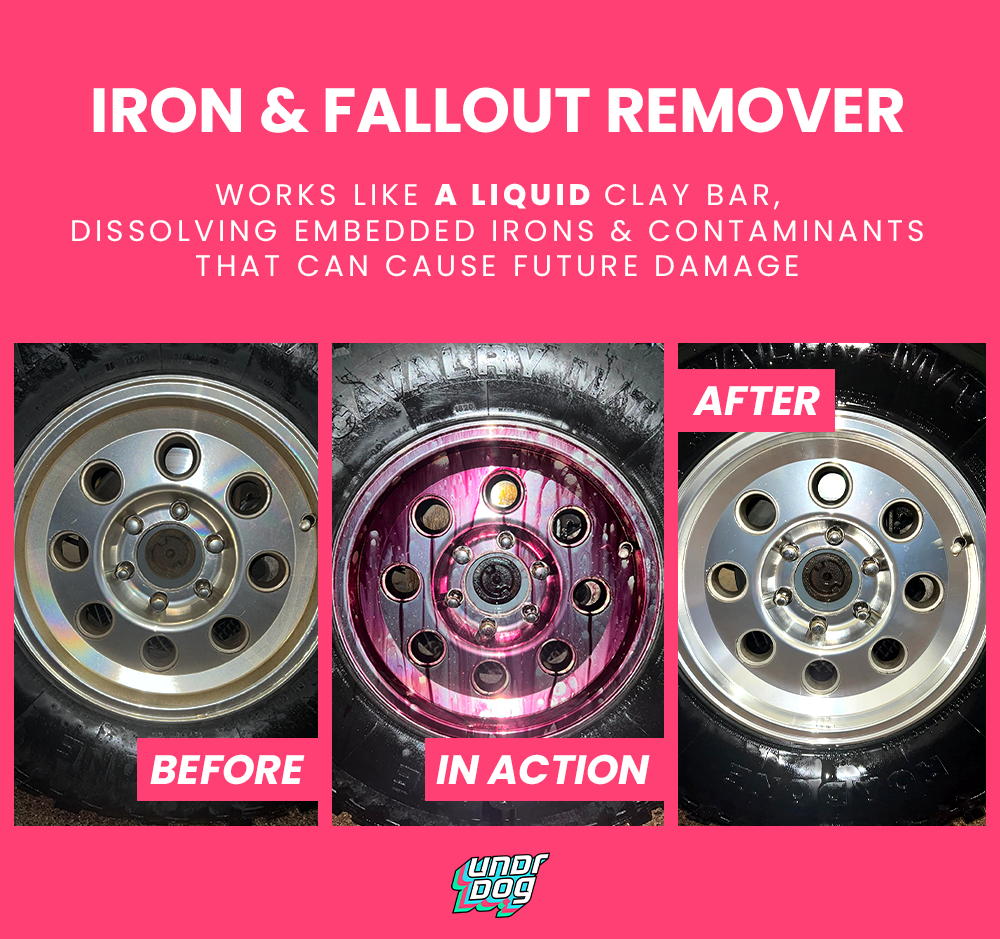
The Purps is safe for most types of wheels, however be careful with chrome - it can cause damage & discoloration. To determine if it’s safe to use, we suggest conducting a small surface test first.
To keep the wheels looking like new for longer detailers often apply tire coatings. These products add an extra layer of protection against sun damage and oxidation that can make even new tires look old or worn out in just a few months.
Undrdog Tire Coating is made with a UV-protected proprietary formula that repels water, mud, road salt, and other contaminants.

This product is super easy to use and gives tires a high-gloss finish, making them look just like they did on the showroom floor.
Polishes and Compounds
Polishes and compounds are both liquids applied with a buffing/polishing machine and used in paint correction. The difference between them is in the amount of the surface layer they remove.
Compounds are the more aggressive of the two. These products work well when the paint’s clear coat has been penetrated - on heavy scratching, oxidation, etching, etc. However, they do leave behind micro-marring.
To give the paint a smooth finish and eliminate all surface imperfections, detailers utilize polishers. These products are specifically formulated to suit different stages of the paint correction process. Using them properly will get you that smooth, high-gloss finish your customers are after!
We recommend the Koch-Chemie - Heavy Cut (for reworking heavily weathered paintwork, removal of paint mists and sanding traces), the Koch-Chemie - Fine Cut (for the removal of wash-induced marring & similar traces), and the Koch-Chemie - Micro Cut (for the removal of streaks, holograms, fine marks, and a high gloss finish).






Waxes, Sealants, and Coatings
After you’ve corrected a vehicle’s paint, you will want to protect it by using one of the existing methods of paint protection. Waxes, sealants, and coatings are different types of finishing products that are used for this purpose.
Wax is the most well-known type of paint protection and an entry point of sorts as the most basic and cheapest product in the category. It keeps vehicles looking clean for longer and gives them a high level of gloss. But wax isn’t a long-term solution as it doesn’t provide reliable protection against environmental factors.
Sealants are synthetic compounds specifically engineered to enhance vehicles’ glossiness and protect automotive paint. They form a longer-lasting protective layer that boosts the vehicle’s shine, giving the surface a wet-look finish. Still, sealants are quite vulnerable to UV rays and harsh chemicals.
Protective coatings are the latest and greatest in paint protection technology. Often referred to as “ceramic”, “nano” and “glass” coatings, these products are mostly silica-based polymer solutions that bond to automotive paint on a microscopic level. When applied, coatings don’t create a light film on the surface like waxes or sealants, but a harder, shell-like finish that acts as a durable barrier to the elements. They’re designed for use on paint, but also on leather, vinyl, plastics, metal, wood, and glass. Compared to waxes and sealants, coatings provide better and longer protection, superior gloss, and hydrophobicity.
Our recommendation is obviously our flagship product - Undrdog Pro. It has all the features you want in a protective coating: it's easy to apply, provides extra-long flash times, beads water, protects all surfaces, and creates a deep, warm shine every time.

Personal Protective Equipment (PPE)
Personal protective equipment, commonly referred to as "PPE", is equipment worn to minimize exposure to hazards that cause serious workplace injuries and illnesses.
For professional detailers, these injuries and illnesses may result from contact with chemical, electrical, mechanical, or other everyday workplace hazards.
Apart from always having a first aid kit on hand, you should purchase PPE for:
- ear protection (ear muffs, ear plugs - when handling loud machinery)
- eye protection (goggles, safety glasses - when handling harsh chemicals)
- hand protection (different types of high-quality chemical-resistant gloves)
- respiratory protection (masks, respirators - when working with chemicals)








If you often detail outside, consider wearing a cap with eyelets to protect you from the sun. Also, invest in comfortable waterproof sneakers or spray your favorite pair with a fabric protectant spray. We also recommend wearing long pants when working because some detailing chemicals are very harsh on the skin.
Conclusion
Launching any type of detailing business requires you to make an upfront investment to purchase essential equipment, PPE, and supplies necessary for doing the job.
Depending on the type of business you run and the services you provide, you may not need some of the things on this list, and find that some you do need are missing!
Also, with time, new products and methods will emerge that might require you to expand or adjust your products and services menu to keep up with the trends.
Our aim with this article isn’t to tell you exactly what equipment, supplies, and PPE your detailing business needs. We wanted to give you an idea of what we believe are detailing necessities that will streamline your business and make your life easier.
As veterans in the detailing industry, we also wanted to give you some product recommendations for things we have tried and tested through the years.
Remember: having the right tools to delight your customers will help you get on the road to success!
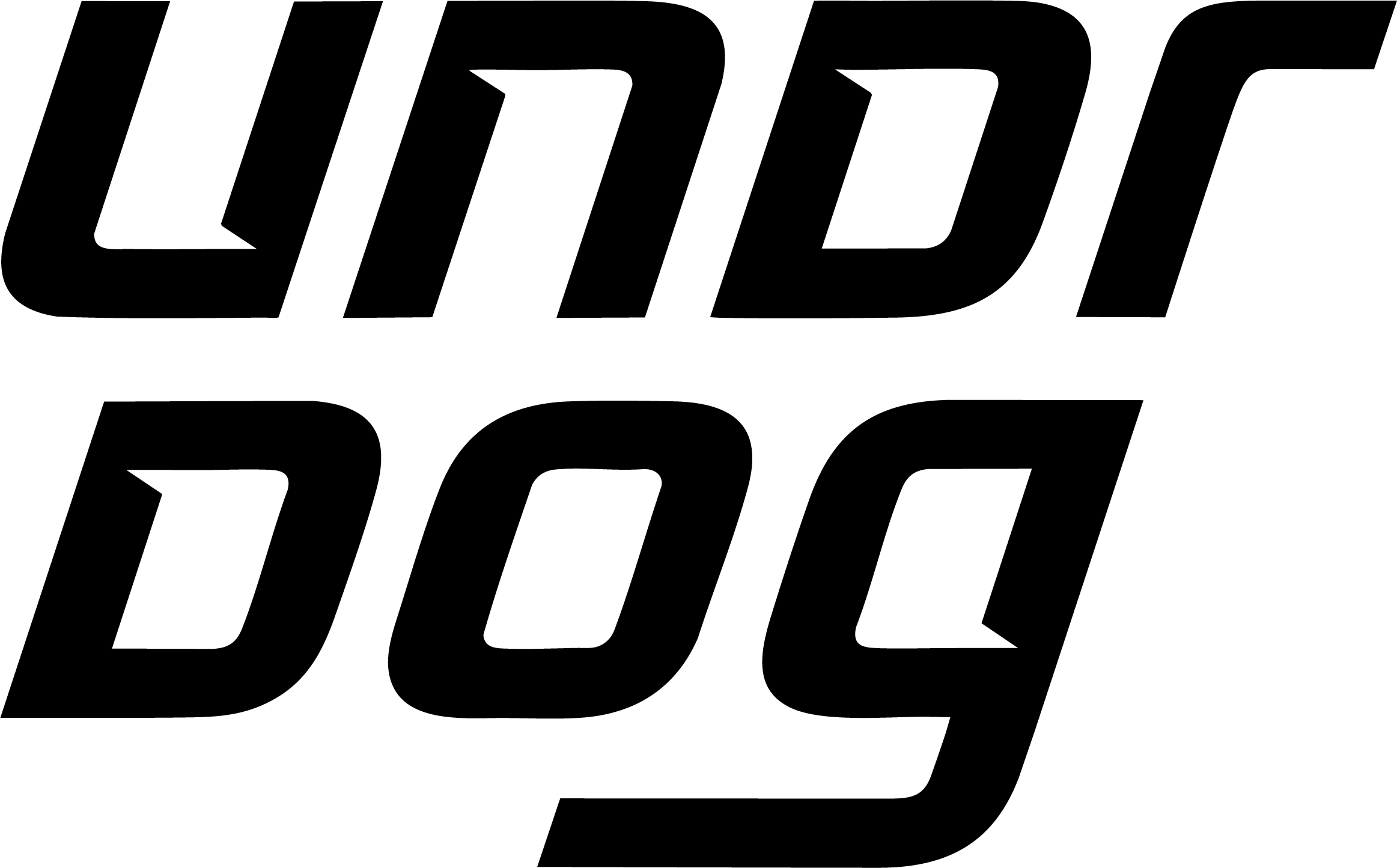
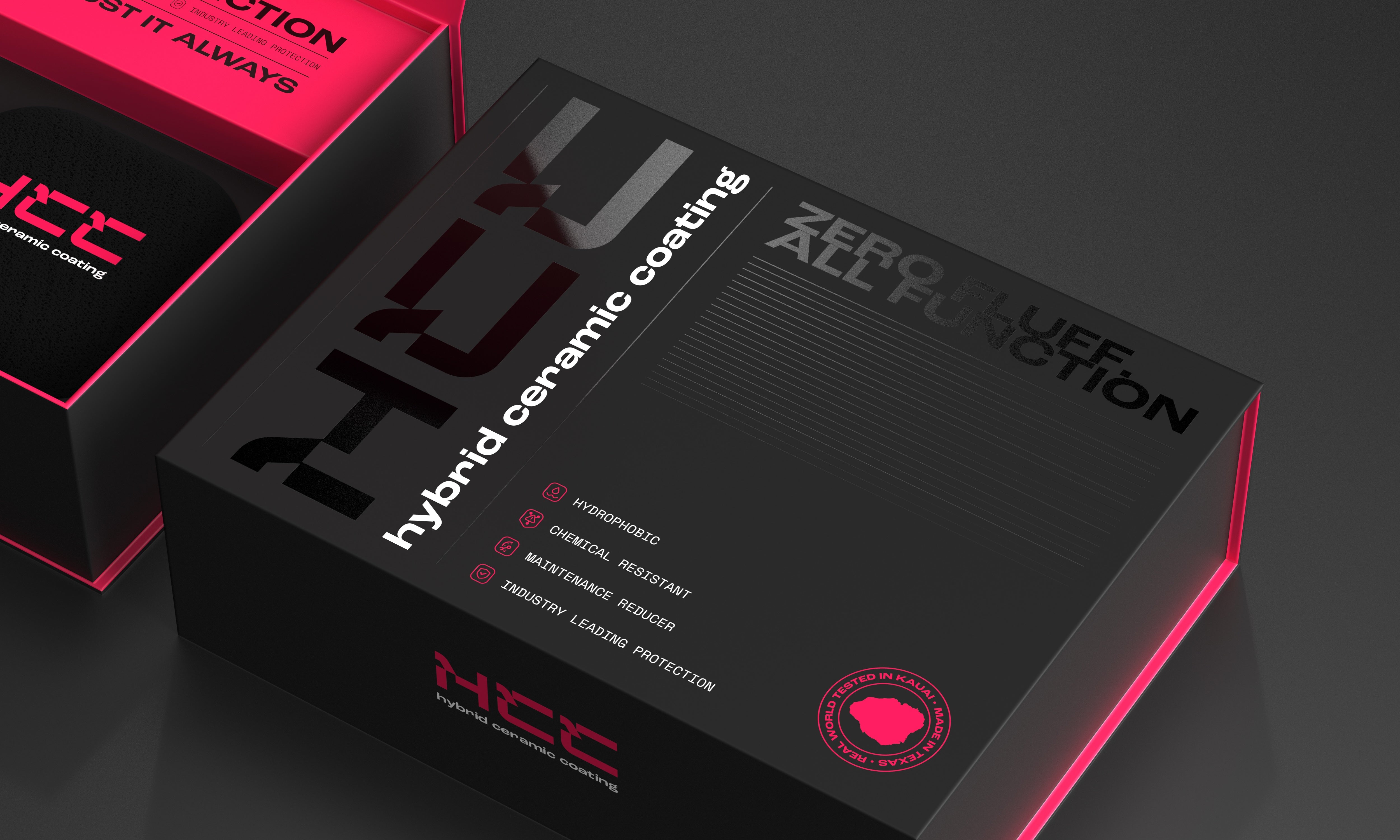
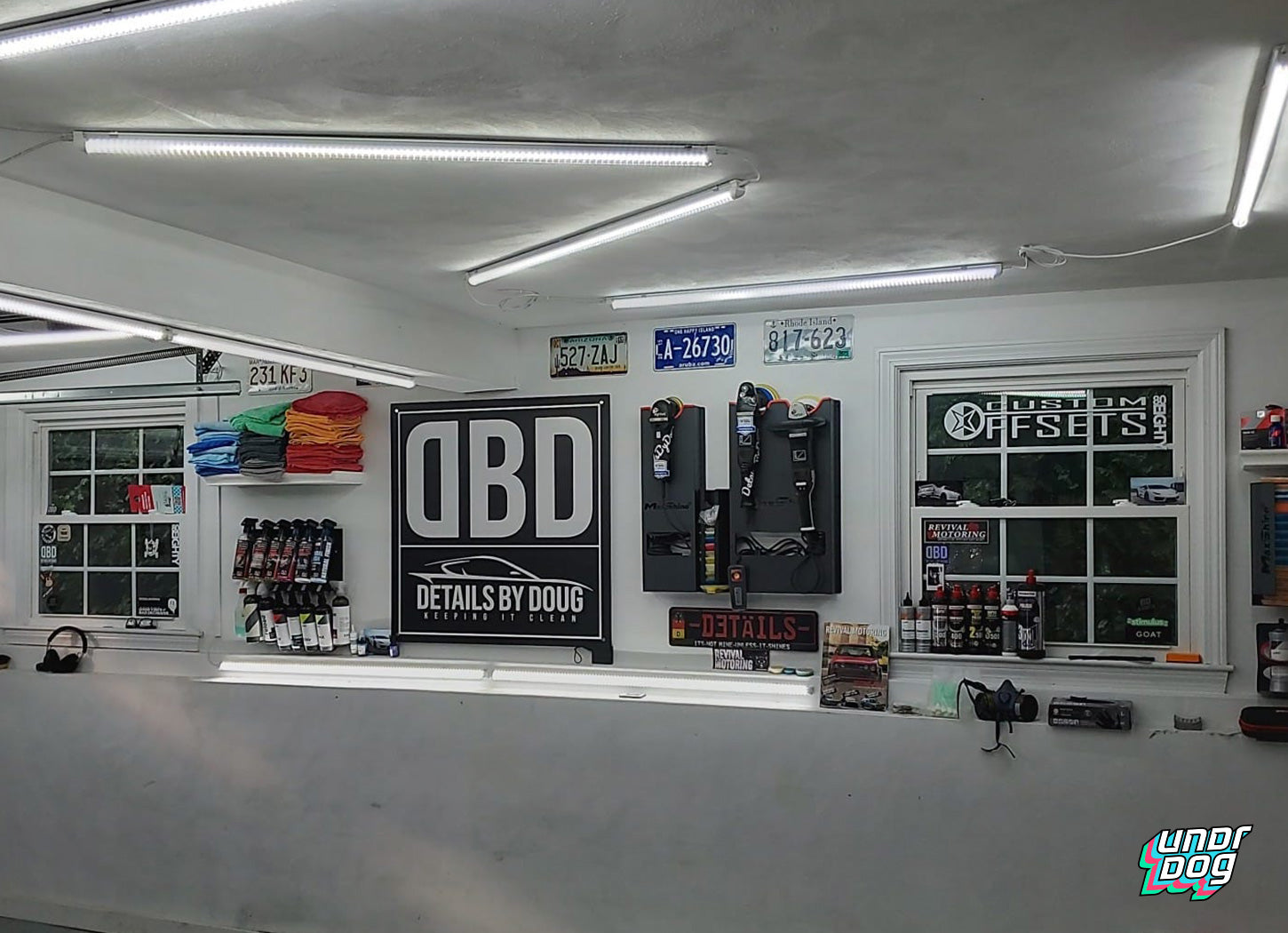




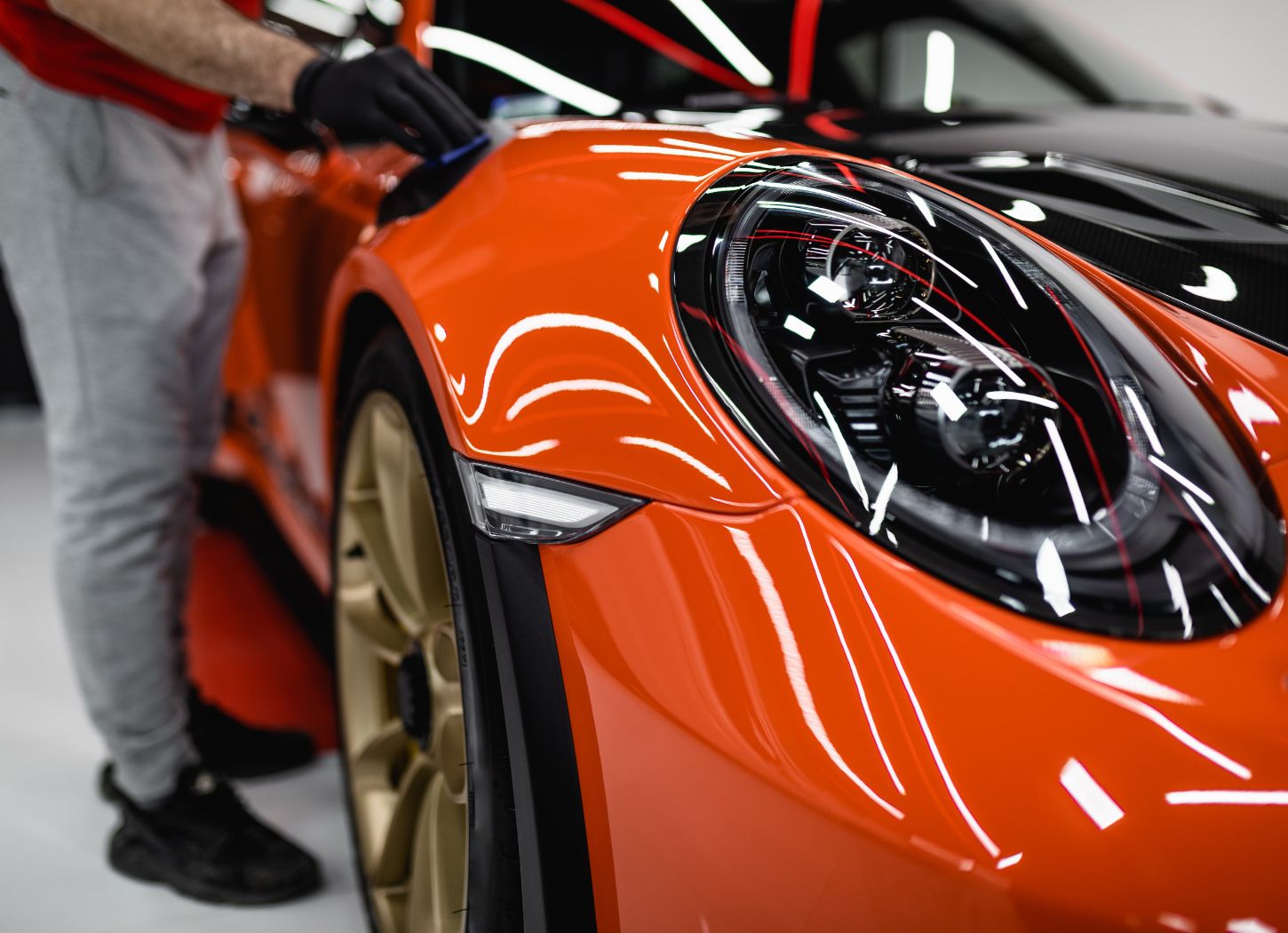
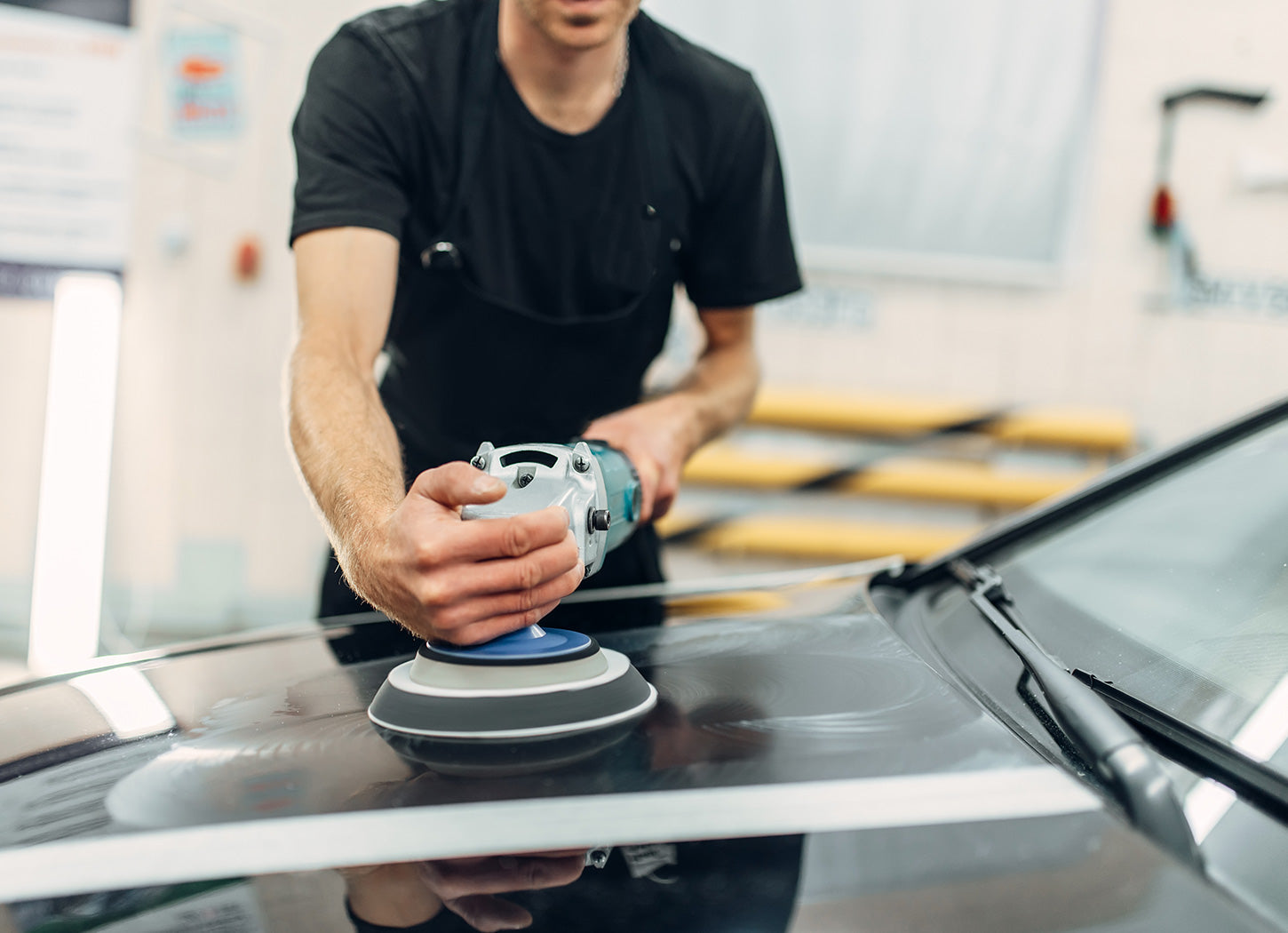
4 comments
Georgina Mckenzy
My father’s friend has a construction business and plans to add polishing equipment to offer other services to his clients. He has been in the industry for three years but already has many regular clients because of their excellent service. As you say, if you have the right tools, the job will be easier and go faster, and the results will be better. https://www.alliedhightech.com/equipment/grinding-polishing
Serb
Great job!
Douglas
Just want to say this is awesome to have my shop used for the article. It was a long process to get my set up where I want it to be and it still has some more growth to come. One thing I learned quickly is to maximize your work space is to be as organized as possible as well as having the right equipment. Definitely do your research when buying big ticket items and make sure your getting something that is going to make you money not cost you money in the long run. The items metioned in this article are definitely some must haves. Especially the Undrdog products!
Tony
Great write up! I have been looking for about 90% of these tools and accessories and will be buying them based on your recommendations! Thank you for putting this together!
Leave a comment
This site is protected by hCaptcha and the hCaptcha Privacy Policy and Terms of Service apply.